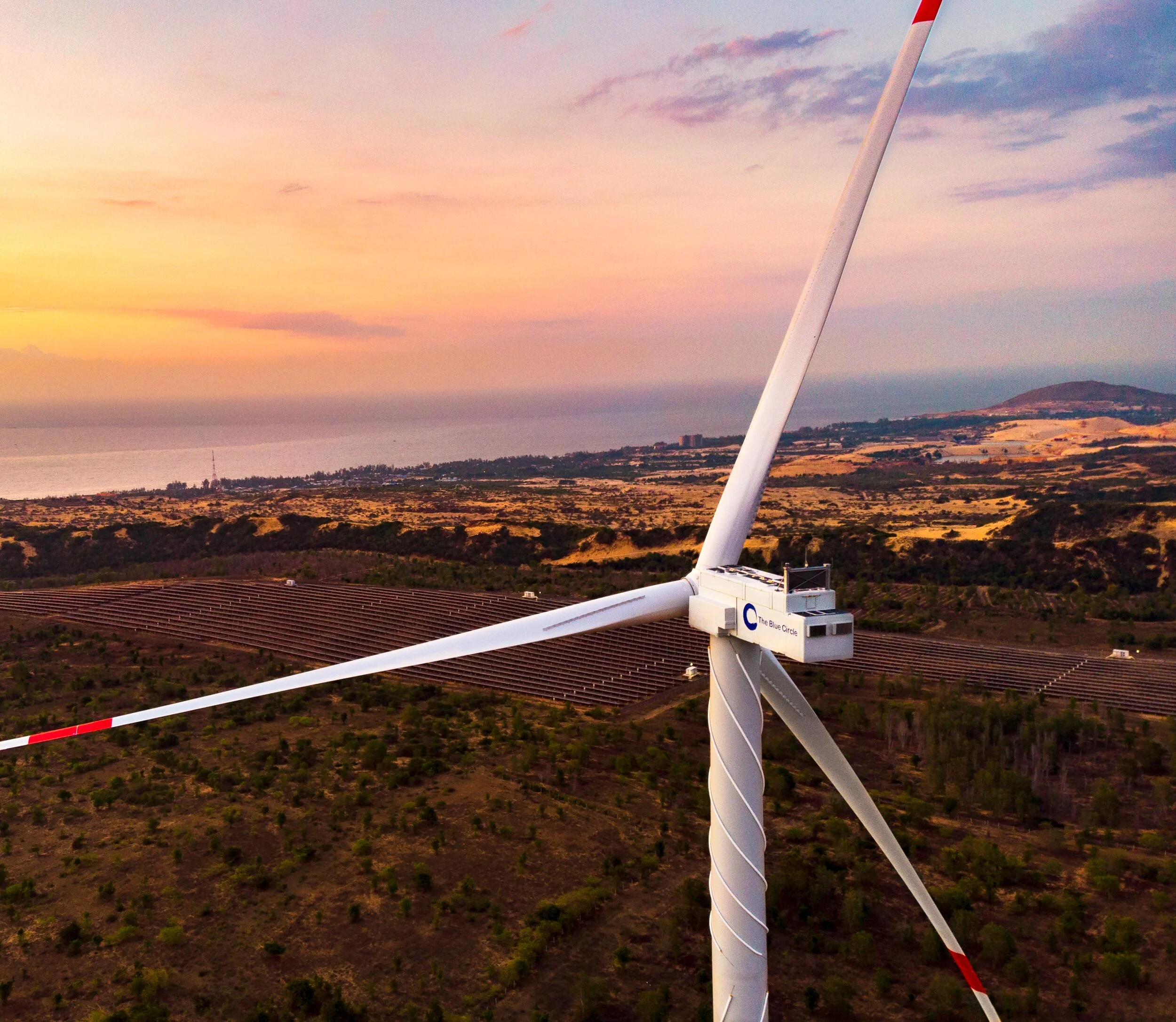The time for wind power implementation in Cambodia has come.
According to the International Energy Agency (IEA), Southeast Asia’s energy demand has increased by more than 80% since 2000 and is expected to increase by another 60% by 2040. Electricity demand in the region was rising by 6% per year before the Covid-19 pandemic outbreak with some countries like Cambodia growing even faster. If the speed of the economic recovery in 2022 and beyond is still debatable, the rebound coming from a worldwide vaccination campaign and the return of household’s consumption leaves no doubt.
As the European Union is implementing the “Green Deal” and the United States are “Building back better” by accelerating investment in renewable energy to fight climate change and promote recovery jobs, some countries in Southeast Asia are planning to use the same roadmap. The United Nations Climate Change Conference (COP26) in Glasgow, Scotland in November of this year will see all Paris Agreement’s signatory governments (including those of ASEAN) re-emphasize their firm and binding commitment to lower their CO2 emissions according to the UN’s Race to Zero campaign.
The Blue Circle’s wind farm in Mui Ne, Vietnam
According to energy consultant leading firm Rystad Energy, ASEAN countries are forecasted to build 6 GW of renewable power projects in 2021 and will increase their annual investment by up to 11 GW by 2025. The onshore wind projects build-up is expected to represent one third of all new renewable energy plants to come online in the region. In Vietnam alone, in a letter sent on March 22 to the Ministry of Industry and Trade (MOIT), Electricity of Vietnam (EVN) was reporting that 4,432 MW of new wind projects are being built this year (mainly in South Vietnam).
The last Power Development Plan presented to the Prime Minister in March was proposing a minimum of 11,320 MW of wind power to be installed by 2025 and 16,010 MW by 2030. Thailand, by implementing the rule to have Electric Vehicles representing 50% of all cars sold in Thailand by 2030, is crafting its New National Energy Plan with 6 to 10 GW of new wind power capacity installed by 2037. As of today, Vietnam and Thailand, Cambodia’s neighboring countries, have installed respectively 582 MW and 1,538 MW of wind power capacity already and are planning to install a minimum of 6,000 MW of new projects by 2025.
Comparatively, Cambodia has included in its 2030 Electrical Master Plan only 80 MW of wind energy by 2024. Even if the 2030 target of 17,677 MW total installed electrical generation capacity set in 2019 for the country were to be revised down by 30% following the pandemic, the wind power share would only represent a mere 0.64% of Cambodia’s total capacity installed in 2030. In the same timeframe, the Electrical Master Plan includes 1,740 MW of solar power to be installed by 2030, potentially representing 12.1% of Cambodia total capacity installed and plans to reach 540 MW before 2023.
As the Director-General of Electricité du Cambodge (EDC) and Minister, H.E. Keo Rattanak, stated on Jan 28th, 2019: “Renewable energies are not in competition with each other, each technology has its own merits and should be judged by its own characteristics”. All ASEAN countries with good wind and solar resources outside of Cambodia, namely the Philippines, Thailand and Vietnam, are expecting to tap into both solar PV and wind power opportunities to produce cheap renewable energy going forward. Energy consultant Rystad Energy is forecasting between 3 to 4 GW of equal yearly installation for solar PV and onshore wind in Southeast Asia in the next 5 years.
This convergence is not only banking on complementary load profiles between solar, peaking at midday, and wind, producing mostly during the later part of the day, but also on the convergence of costs. The last solar Feed-in-tariff in Vietnam (2020) was at 7 USc./kWh, the last direct solicited PPA signed by EDC (2019) was at 7.6 USc./ kWh, the wind Feed-in-tariff in Vietnam is at 8.5 USc./kWh until November 1stof this year before being revised down, the first wind PPA in Cambodia is already presented below 7 USc./kWh...
According to EVN, more than 1,300 MW of wind power projects will be connected to the grid by the end of the year in the Gia Lai and Dak Nong provinces located directly along the Cambodian border. Independent consultant 3i, in a study financed by the Australian government and released on July 15th, 2020, confirmed that Cambodia, in a Medium Wind Scenario, could install 1,185 MW by 2030 in 7 already identified windy zones. This capacity could represent 10% of the total Cambodian electricity generation in 2030, reaching an optimized cost of 6.86 USc./kWh and avoiding 10 Million tons of Co2 emissions. Regarding grid compatibility with different intermittent renewable generation levels, the study concluded that 10% of wind power in Cambodia’s energy mix would be manageable by EDC without heavy additional investments.
So, will Cambodia build back from the pandemic by adding wind power to its solar ambition? Will EDC go beyond a first 80 MW wind pilot project still to be implemented and follow its Mekong neighbors to tap into its wind national resource with a comprehensive plan? Now is the time.
Olivier Duguet
Chairman & CEO
The Blue Circle


